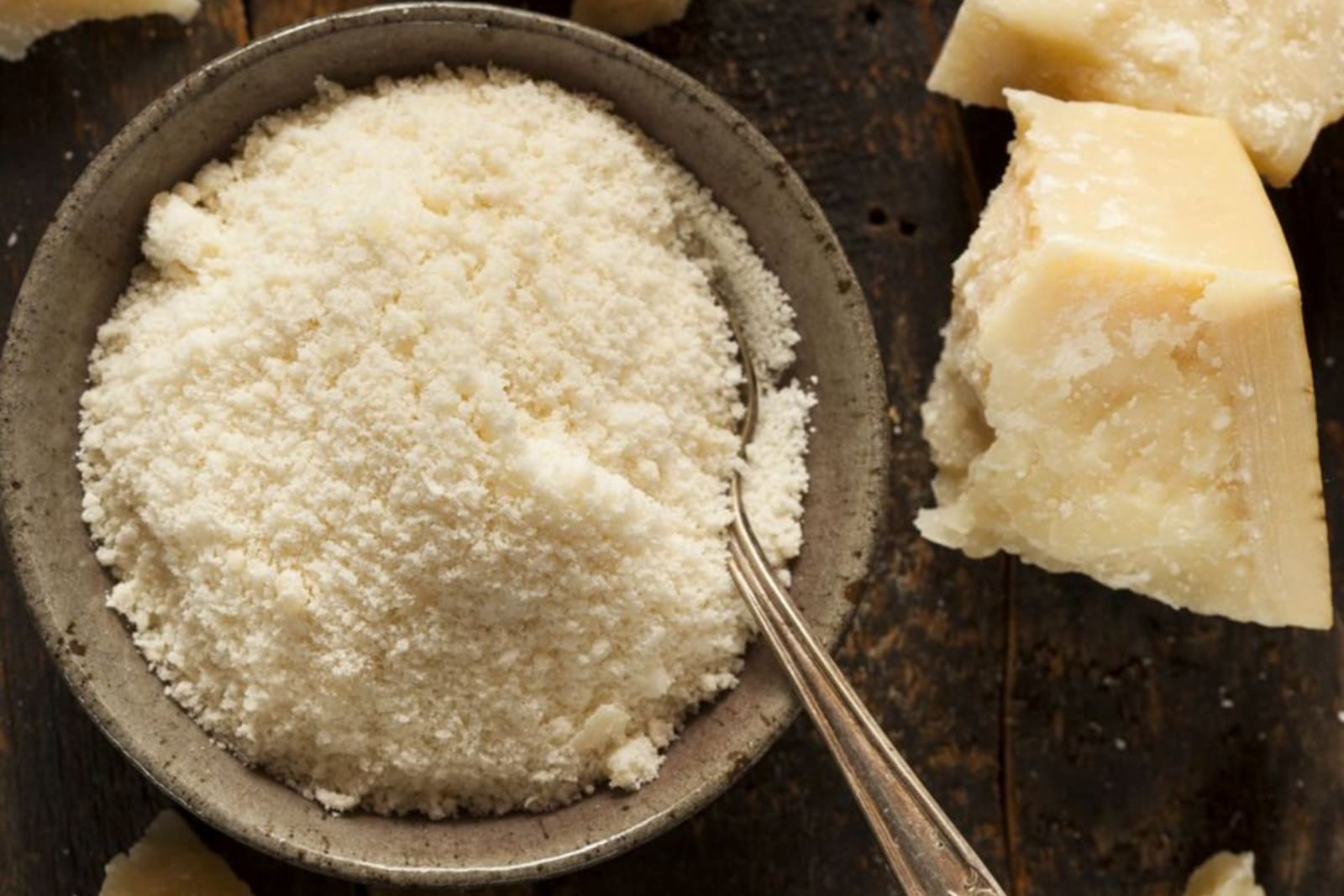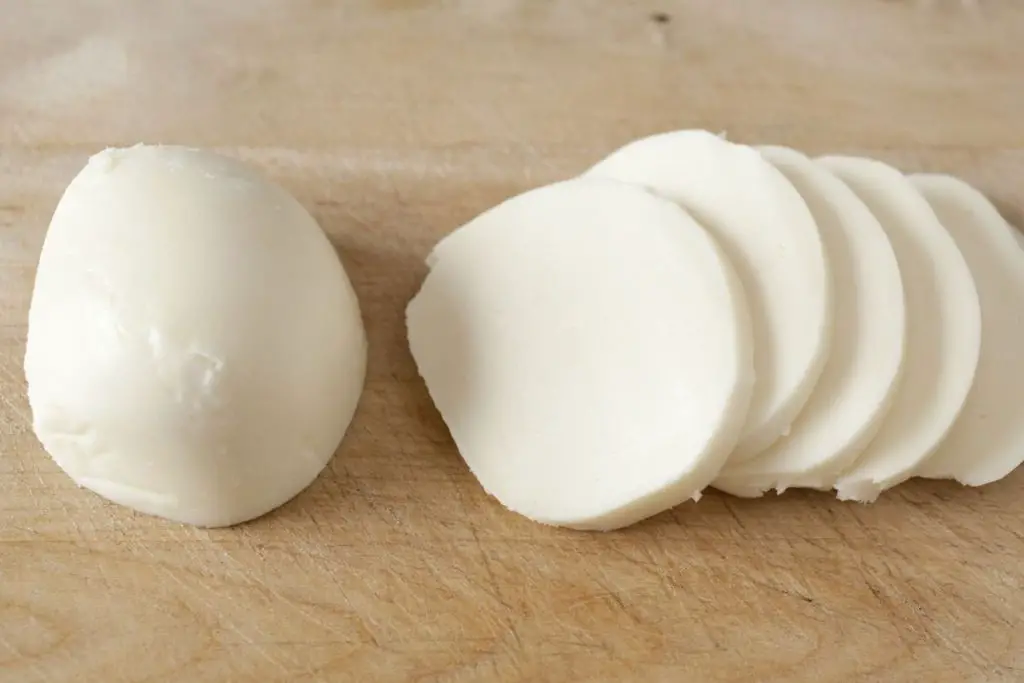
Parmesan cheese is a versatile and beloved ingredient in the culinary world. Its rich, nutty flavor and granulated texture make it an essential addition to pasta, salads, and countless other dishes. While Parmesan cheese is a pantry staple for many, there may be occasions when you have more of it than you can use before it starts to lose its freshness. Freezing Parmesan cheese is an excellent solution to extend its shelf life and ensure you always have this savory ingredient on hand. This article outlines a step-by-step guide to freezing Parmesan cheese while maintaining its original flavor and texture.
Here’s a comprehensive guide on how to freeze Parmesan cheese:
Step 1: Select high-quality Parmesan cheese
Selecting the right Parmesan cheese is the crucial first step in the process of freezing it effectively. High-quality Parmesan cheese, whether it’s Parmigiano-Reggiano or a similar aged Parmesan variety, is essential for achieving the best results.
Here’s why it’s important to choose a high-quality Parmesan cheese:
- Flavor and Aroma: High-quality Parmesan cheese boasts a rich and complex flavor profile, characterized by nuttiness and a hint of saltiness. The aging process, which can range from 12 months to several years, contributes to the cheese’s unique taste and aroma. Lesser-quality Parmesan cheese may lack this depth of flavor.
- Texture: The texture of good Parmesan cheese is typically granulated, making it easy to grate or shave. This texture enhances the cheese’s ability to melt smoothly in sauces and soups, and it provides a delightful, crumbly texture when sprinkled on dishes. Cheaper Parmesan cheeses may have a grainy or rubbery texture, which can negatively impact your culinary creations.
- Fewer Additives: High-quality Parmesan cheese is usually free from unnecessary additives or fillers that can affect its texture and shelf life. Pre-grated Parmesan cheese, on the other hand, often contains anti-caking agents and preservatives to prevent clumping and extend shelf life. These additives may not freeze well and can compromise the cheese’s quality when thawed.
- Authenticity: Parmigiano-Reggiano, a well-known type of Parmesan cheese, is subject to strict production regulations in Italy. This ensures that it is made using traditional methods and high-quality milk, resulting in an authentic and unparalleled cheese. When purchasing Parmesan cheese, look for the Parmigiano-Reggiano seal to guarantee authenticity.
Step 2: Portion the cheese
After selecting your high-quality Parmesan cheese, the next important step in freezing it effectively is to decide how you’d like to portion the cheese for freezing. This step is crucial because it not only helps with convenient usage but also plays a role in preserving the cheese’s quality.
Here’s why portioning the cheese is important and the two common methods you can use:
- Convenience and Versatility: Portioning the cheese allows you to customize how you use it in your dishes. By dividing the cheese into manageable portions, you can easily take out only the amount you need for a particular recipe without having to thaw the entire block. This level of convenience is especially helpful when you want to add a finishing touch of grated Parmesan to your pasta or salad.
- Minimize Freeze-Thaw Cycles: Every time you expose frozen cheese to room temperature, moisture can accumulate on its surface, leading to potential texture changes and flavor loss. Portioning the cheese reduces the need to repeatedly thaw and refreeze the entire block, preserving its quality over time.
Two Common Portioning Methods:
- Small Blocks: You can choose to portion the Parmesan cheese into small blocks or wedges. These blocks can be individually wrapped in plastic wrap or aluminum foil, allowing you to defrost only the amount you need. This method is ideal when you prefer the convenience of grating the cheese fresh for each use or when you want to shave it into thin slices.
- Grated Parmesan: Alternatively, you can grate the Parmesan cheese before freezing it. This method is convenient when you frequently use grated Parmesan in your cooking. You can divide the grated cheese into portions and place them in airtight containers or resealable plastic bags. Grating before freezing eliminates the need for additional grating when you’re preparing a meal.
The choice between small blocks and grated Parmesan depends on your cooking habits and preferences. Both methods work well for freezing Parmesan cheese, so you can choose the one that suits your needs best.
Step 3: Wrap the cheese
Once you’ve successfully portioned your Parmesan cheese for freezing, the next crucial step is to wrap each portion securely. Proper wrapping is essential to protect the cheese from exposure to air, moisture, and odors in the freezer. Here’s why wrapping is important and how to do it effectively:
- Prevent Freezer Burn: Freezer burn is the enemy of frozen foods, and Parmesan cheese is no exception. When food is exposed to air in the freezer, ice crystals can form on its surface, leading to freezer burn. Freezer burn can cause the cheese to become dry, discolored, and develop an off-flavor. By wrapping the cheese tightly, you create a barrier that prevents air from coming into contact with the cheese, minimizing the risk of freezer burn.
- Maintain Freshness: Parmesan cheese is known for its distinct flavor and texture. Proper wrapping helps maintain these qualities. Without a secure barrier, the cheese can absorb unwanted flavors and odors from other foods in the freezer, compromising its taste.
Here’s how to wrap Parmesan cheese effectively:
- Use Plastic Wrap or Aluminum Foil: Both plastic wrap and aluminum foil are suitable materials for wrapping Parmesan cheese. Plastic wrap provides an airtight seal, while aluminum foil offers protection from light and air. Choose the one that suits your preference.
- Place the Cheese in the Center: Lay the portion of Parmesan cheese in the center of the plastic wrap or aluminum foil.
- Fold and Seal: Fold the sides of the wrap or foil over the cheese, ensuring that it is completely covered. Seal all edges tightly to prevent any air from entering. If you’re using plastic wrap, you can twist the ends to create a secure seal.
- Label the Wrapped Cheese: To keep track of your frozen Parmesan cheese, label each wrapped portion with the date of freezing. This helps you identify the oldest portions in your freezer for consumption.
- Repeating for Multiple Portions: If you’re freezing several portions of Parmesan cheese, repeat this wrapping process for each one.
Step 4: Place portions in an airtight container
After wrapping each portion of Parmesan cheese securely, it’s a smart idea to take an extra step to safeguard it further by placing the wrapped portions inside an airtight container or resealable plastic bags. This additional layer of protection serves two essential purposes:
- Enhanced Protection Against Freezer Burn: Freezer burn is caused by exposure to air, and even with proper wrapping, there can be small gaps or seams that allow air to reach the cheese. By placing the wrapped portions inside an airtight container or sealed plastic bags, you create a secondary barrier against air infiltration. This significantly reduces the risk of freezer burn, preserving the cheese’s flavor and texture.
- Odor Isolation: Parmesan cheese has a robust and distinctive aroma. Placing it inside an airtight container or sealed bags prevents its aroma from permeating other items in your freezer. This helps maintain the purity of the cheese’s flavor and prevents it from taking on unwanted odors from neighboring foods.
Here’s how to use an airtight container or resealable plastic bags effectively:
- Choose the Right Container: Select an airtight container that is appropriately sized to accommodate the wrapped portions of Parmesan cheese. Alternatively, you can use resealable plastic bags designed for freezing.
- Arrange the Wrapped Portions: Place the wrapped portions of Parmesan cheese inside the container or bag. Ensure that there is enough space between portions to allow for proper sealing.
- Remove Excess Air: If using a resealable plastic bag, press out as much air as possible before sealing it. This step helps maintain an airtight environment within the bag. For an airtight container, simply secure the lid, making sure it’s tightly sealed.
- Label the Container or Bag: To keep track of your frozen Parmesan cheese, label the airtight container or resealable bag with the date of freezing. This ensures that you use the oldest portions first.
- Store in the Freezer: Place the labeled and sealed container or bags in the freezer. Store them in an area with stable temperatures, away from the freezer’s door to minimize temperature fluctuations.
Can I freeze Parmesan cheese in its original packaging?
It is generally not recommended to freeze Parmesan cheese in its original packaging. The original packaging may not provide adequate protection against freezer burn and moisture infiltration, which can affect the cheese’s quality. For optimal results, it’s advisable to repackage the Parmesan cheese using proper freezer-safe materials and techniques, such as wrapping and using airtight containers or bags.
Step 5: Label and date the containers
Labeling and dating the containers or bags that hold your frozen Parmesan cheese is a simple yet essential step in the freezing process. This practice serves two primary purposes:
- Tracking Freshness: Parmesan cheese, like any food item, has a limited shelf life, even when frozen. By labeling and dating the containers, you can keep track of how long the cheese has been in the freezer. This information is crucial for ensuring that you use the oldest cheese first to maintain optimal freshness.
- Preventing Food Waste: Properly labeling and dating containers help you avoid the risk of forgetting about items in your freezer. This proactive approach reduces the likelihood of finding forgotten cheese that has been in the freezer for an extended period, potentially past its peak quality. Using the oldest cheese first minimizes food waste and ensures you enjoy the best flavor and texture.
Here’s how to label and date containers effectively:
- Use a Permanent Marker: Choose a permanent marker with dark ink to write on the containers or bags. This ensures that the labeling remains visible throughout the freezing and thawing process.
- Note the Date: Write down the date when you froze the Parmesan cheese. This should be the date when you completed the entire freezing process, including wrapping and placing it in the airtight container or bag.
- Be Specific: When labeling, be specific with the date format (e.g., MM/DD/YYYY or DD/MM/YYYY) to avoid any confusion later. Ensure that the label is legible and easy to read.
- Include Quantity Information (Optional): If you’ve portioned the Parmesan cheese differently in various containers or bags, consider including the quantity or weight of cheese in each. This information can be handy when you’re planning a recipe and need to know how much cheese to use.
- Store Containers in an Organized Manner: Once labeled, store the containers or bags in an organized manner in your freezer. You can use stacking or shelving systems to help keep track of the oldest cheese.
Step 6: Freeze the Parmesan cheese
Now that you’ve meticulously wrapped, sealed, labeled, and dated your portions of Parmesan cheese, it’s time to move on to the crucial step of freezing it. Proper freezing is essential to preserving the cheese’s quality and ensuring it remains safe for consumption. Here’s why this step is important and how to execute it effectively:
- Preserving Quality: Freezing Parmesan cheese at the correct temperature (-18°C or 0°F) ensures that the cheese remains frozen solid. This prevents the formation of ice crystals within the cheese, which can degrade its texture and flavor over time. By freezing the cheese properly, you maintain its desirable attributes.
- Food Safety: Freezing is an effective way to inhibit the growth of microorganisms that can cause food spoilage. It also prevents the proliferation of harmful bacteria, ensuring that your Parmesan cheese remains safe for consumption throughout its time in the freezer.
Here’s how to freeze Parmesan cheese effectively:
- Arrange Labeled Containers: Take the labeled and sealed containers or bags of Parmesan cheese and arrange them neatly inside your freezer. Ensure that there’s enough space around each container or bag for proper airflow.
- Choose a Stable Area: Place the containers or bags in a section of the freezer where the temperature remains stable. Avoid putting them near the freezer door, as this area is more prone to temperature fluctuations each time the door is opened.
- Maintain Freezer Temperature: Verify that your freezer is set to the recommended temperature of -18°C (0°F). This temperature ensures that the cheese freezes quickly and remains in optimal condition.
- Avoid Overcrowding: While it’s tempting to make the most of your freezer space, avoid overcrowding it with too many items at once. Overcrowding can hinder proper airflow and cause uneven freezing, potentially affecting the cheese’s quality.
- Patience is Key: Allow the Parmesan cheese ample time to freeze solid. Depending on the thickness of the portions and the efficiency of your freezer, this may take several hours overnight.
How long can Parmesan cheese last in the freezer?
Parmesan cheese can last in the freezer for up to 6 to 8 months when properly stored in an airtight container or resealable bag. Beyond this time frame, the cheese may still be safe to eat, but its quality in terms of flavor and texture may deteriorate gradually. To ensure the best taste and texture, it’s advisable to use frozen Parmesan cheese within the recommended storage period.
Step 7: Thaw and use as needed
After successfully freezing your Parmesan cheese using the proper techniques, it’s equally important to understand how to thaw and use it correctly. Thawing the cheese properly ensures that it retains its original flavor and texture, allowing you to fully enjoy its savory qualities. Here’s why this step is essential and how to execute it effectively:
- Preservation of Quality: Thawing Parmesan cheese in the refrigerator at a controlled temperature minimizes the risk of texture and flavor alterations. Slow, gradual thawing helps preserve the cheese’s granulated texture and prevents it from becoming mushy or overly soft.
- Food Safety: Thawing in the refrigerator is a safe method for defrosting Parmesan cheese. It keeps the cheese at a consistent, low temperature, preventing the growth of harmful bacteria that can occur when thawing at room temperature.
Here’s how to thaw and use Parmesan cheese effectively:
- Plan Ahead: Before you need to use the Parmesan cheese, plan ahead for thawing. It’s a gradual process that takes time, typically requiring several hours or overnight in the refrigerator.
- Remove from Freezer: Retrieve the labeled and dated container or bag of Parmesan cheese from the freezer. If you’ve portioned the cheese into small blocks or wedges, take out the desired portion. For grated Parmesan, you can remove the amount needed.
- Refrigerator Thawing: Place the portioned Parmesan cheese in a covered container or on a plate and transfer it to the refrigerator. Keep it separate from raw foods to prevent cross-contamination. Thawing in the refrigerator allows the cheese to defrost slowly and evenly.
- Be Patient: Allow the cheese to thaw in the refrigerator, giving it ample time to regain its original texture and flavor. This may take several hours or overnight, depending on the size and thickness of the portion.
- Use as Needed: Once the Parmesan cheese has thawed completely, you can use it in your recipes as needed. Grated Parmesan can be directly sprinkled onto dishes, while small blocks or wedges can be grated or shaved for use.
- Return Unused Portions to the Freezer: If you have any leftover thawed Parmesan cheese, do not refreeze it. Instead, store it in the refrigerator and use it within a few days to maintain its quality.
Other related questions
Can I refreeze Parmesan cheese?
No, it’s not recommended to refreeze Parmesan cheese once it has been thawed. Repeated freezing and thawing can negatively affect the cheese’s texture and flavor, potentially leading to a decline in quality. To maintain optimal freshness, it’s best to portion and freeze Parmesan cheese in amounts you can use in one go.
How do I know if the Parmesan cheese has gone bad after being frozen?
To determine if frozen Parmesan cheese has gone bad, examine its appearance, smell, and texture. If the cheese shows signs of freezer burn, such as ice crystals, dryness, or discoloration, it may have deteriorated. Additionally, if it develops an off or sour odor, it’s likely spoiled. When in doubt, err on the side of caution and discard Parmesan cheese that exhibits these signs to ensure food safety.
What are the best ways to use frozen Parmesan cheese?
You can use frozen Parmesan cheese in various dishes like pasta, salads, soups, and casseroles. Grated cheese can be added directly to recipes, while you can thaw and shave or grate blocks or wedges for garnishing.
Is there a difference in quality between fresh and frozen Parmesan cheese?
When properly frozen and thawed, Parmesan cheese can maintain its flavor and texture quite well. However, some connoisseurs may notice a subtle difference compared to freshly grated Parmesan. Still, for most dishes, the quality remains high.
Can I freeze Parmesan rinds for flavoring soups and sauces?
Yes, Parmesan rinds are excellent for adding flavor to soups and sauces. You can freeze them and use them directly from the freezer when needed. Just be sure to wash and wrap them before freezing.
Are there any dishes where frozen Parmesan cheese may not work well?
While frozen Parmesan cheese works well in most recipes, dishes that rely on the cheese’s texture, like crispy Parmesan crisps or breaded Parmesan chicken, may be affected by freezing. For these recipes, fresh Parmesan is usually preferred.
Are there any specific Parmesan cheese types that freeze better than others?
All types of Parmesan cheese can generally be frozen effectively. However, aged Parmesan cheeses, such as Parmigiano-Reggiano, often freeze better due to their dense texture and robust flavor, which helps them maintain their quality during freezing and thawing processes. The high-quality milk and traditional production methods used in aged Parmesan cheeses contribute to their ability to withstand freezing without significant texture or taste alterations.








